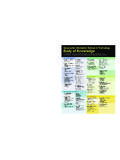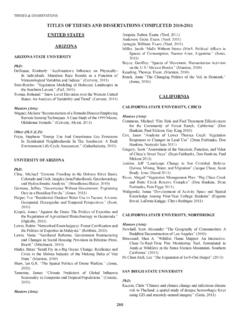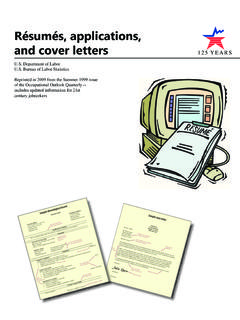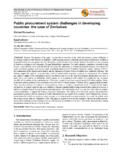Transcription of PUBLICATIONS OF ASSOCIATION - Home | AAG
1 [AAG STANDING RULES EXCERPT REVISED VERSION] PUBLICATIONS OF THE ASSOCIATION OF american geographers The AAG Office is responsible for overseeing and managing the production of AAG PUBLICATIONS , including the Annals of the ASSOCIATION of american geographers , The Professional Geographer, the AAG Newsletter, Jobs in Geography (incorporated as part of the AAG Newsletter since 1971), Guide to Geography Programs in the Americas /AAG Directory of geographers , and other occasional items, such as Careers in Geography, or as requested by the AAG Council. It is the responsibility of the AAG Executive Director or his/her designate to supervise the production and distribution of AAG PUBLICATIONS , to propose an annual budget for funding these PUBLICATIONS , and to report annually to the AAG Council. The AAG Executive Director should involve the PUBLICATIONS Committee in the evaluation of potential publishers.
2 The AAG Executive Director may modify existing PUBLICATIONS exchange arrangements as he/she deems appropriate. In case of any contradiction about, conflict with, or ambiguity of these guidelines with respect to provisions in current PUBLICATIONS contracts, the legal agreement with publishers will be complied with. I. Guidelines for AAG Journals A. Purpose and Content 1. Annals of the ASSOCIATION of american geographers The AAG Annals was first published in 1911. It is recognized as the ASSOCIATION 's premier journal for major research articles and book reviews for all fields of geography. The Annals publishes original, timely, and innovative peer-reviewed articles that advance knowledge in all facets of the discipline. These articles address significant research problems and issues, and are attuned to the sensibilities of a diverse scholarly audience. To be accepted, a paper must adhere to a high standard of scholarship and make an important contribution to geographic knowledge.
3 It should also be grounded in the relevant literature of the specialization it represents and, where appropriate, establish relationships to themes within the broader discipline and related disciplines. In addition to articles in four major areas Environmental Sciences; Methods, Models, and Geographic Information Science; Nature and Society; and People, Place, and Region the Annals publishes integrative and cross-cutting papers, commentaries, review articles, forums, and book reviews. Contents may also include invited essays, presidential addresses, and occasional map supplements. Memorials will be printed in the Annals for AAG Presidents and for exceptionally distinguished geographers as determined by the AAG Council. 2. The Professional Geographer The Professional Geographer, initially a publication of the american Society of Professional geographers , became a journal of the ASSOCIATION of american geographers in 1949.
4 It publishes concise research papers, technical reports, and brief book and software reviews of academic or applied geography. These may range in content and approach from rigorously analytical to broadly philosophical or prescriptive. Contributions on methodological innovations and technical applications are encouraged. This journal provides a forum for new ideas, alternative viewpoints, and debates, with emphasis on questions and problems of broad interest to geographers . B. Responsibilities 1. The Editors are expected to: a. Consult with their Editorial Advisory Boards in determining the general policy, format, and content of the journals, subject to review by the PUBLICATIONS Committee and Council. b. Recommend the appointment of the Editorial Advisory Boards and other Associate or Assistant Editors as deemed necessary, subject to approval by the PUBLICATIONS Committee and Council.
5 C. Promote the submission of original manuscripts that exhibit high standards of scholarship and that reflect the diverse research specializations of geographers . d. Work constructively with authors and aspiring authors during the editorial process. e. Follow accepted practices of scholarly PUBLICATIONS in the peer review process. f. Subject to budgeting constraints, publish accepted papers in a timely fashion. g. Work according to the schedule agreed upon with journal publishers and the AAG Office. h. Prepare an Annual Report to Council on the previous year's operations, calling attention to problems and opportunities that need consideration. i. Editors of the Annals and The Professional Geographer shall each receive an honorarium at current levels approved by the AAG Council. AAG will pay the expenses for Editors to attend occasional meetings of the Editors to be held not more than once per year.
6 J. The various editors of the Annals and The PG Editor should engage in coordination that is consistent with the journal's missions. 2. Assistant Editors Assistant Editors may be appointed by the AAG Council, if desired. 3. Book Review / Cartography Editors a. AAG Council appoints a Book Review Editor for each journal and a Cartography Editor, who works with both journals. b. Book Review Editors of the respective journals work in coordination with each other and with the respective Editors of the Journals. c. The Council encourages AAG s Book Review Editors to seek reviews of other AAG PUBLICATIONS in AAG journals. 4. Editorial Advisory Boards a. Each Editor will have a separate Editorial Advisory Board that shall consult with the editors regarding general policy, format, and journal contents. b. The Editor shall submit a preliminary list of individuals to the PUBLICATIONS Committee for review and approval.
7 Accompanying the submission of names shall be a brief statement by the Editor indicating the rationale for selection ( , balance of specialties, philosophy, expertise, occupational representation, etc.). c. Advisory Board members serve at the pleasure of the Editor, but their terms shall not extend beyond the appointing Editor's term. d. As of July 2008, no editor of an AAG journal or a member of an editorial board of an AAG journal should serve as an editor or member of the editorial board of another AAG journal. If an editorial board member becomes the editor of another AAG journal, that editor should resign from the editorial board of the first journal. This action in no way should inhibit any editor from seeking targeted advice from any member of the AAG, including other editors or editorial board members. This action will not affect the composition of any editorial boards approved before June 30, 2008.
8 5. Authors a. Submission to both journals should be original to the author with full attribution to sources. b. All submissions must be made via the online submission system , Manuscript Central. c. Authors cannot submit their work elsewhere while under review for the AAG journals. d. Authors are responsible for adhering to a style and format acceptable to the editors and to agreed upon schedules. Papers should be carefully structured, clearly and succinctly written, and may be illustrated where appropriate, including quality cartography. e. Authors should avoid language that is sexist, racist, or otherwise biased. f. Manuscripts should receive double-blind reviews by at least two referees, who should be asked to provide constructive, evaluative criticism to aid both authors and editors. g. The AAG encourages authors to make their non-proprietary data available for replication by other researchers.
9 6. The AAG PUBLICATIONS Committee advises the AAG Council on policies regarding all official PUBLICATIONS of AAG; provides support for these official PUBLICATIONS by raising issues ranging from publication style and content to the various sources and levels of financial support; clarifies the purposes of the AAG PUBLICATIONS for the membership; serves as a constructive critic for publication editors; serves as a research body for the editors and the Council on matters related to ASSOCIATION PUBLICATIONS ; and reviews the operation of AAG office PUBLICATIONS annually. 7. The AAG Office arranges for the management, printing, marketing, publicizing, and distribution of ASSOCIATION journals and other PUBLICATIONS , in accordance with current publishing contracts and subject to budget approval by Council. C. Appointments of Editors 1. Editors may not be members or ex-officio members of the PUBLICATIONS Committee.
10 However, editors may be invited to participate in the meetings and deliberations of the PUBLICATIONS Committee and Council. 2. Editors of one AAG journal are ineligible for appointment as editor of the other AAG journal until the term of the first has been completed. 3. Editorial vacancies will be advertised in the AAG Newsletter with sufficient time for response. Applications or nominations should be sent to the Chair of the PUBLICATIONS Committee. 4. Nominees should be asked whether they are willing to serve. 5. All candidates will be asked to submit: a) a brief statement of goals, along with statements on their commitment to working with authors and their policy regarding biased material, including that which can be judged to be sexist; b) a curriculum vitae; and c) names of three references. 6. The statement of goals, curriculum vitae, and letters of reference of all candidates will be circulated to members of the PUBLICATIONS Committee.













